Developer: Culture Brain Publisher: Culture Brain Released: 1989 Genre: RPG
I never knew what to make of Culture Brain. Where Capcom and Konami had signature brands everyone associated them with as well as arcade ports Culture Brain were just plain weird. Many of their titles added vague role playing or fighting game elements that did not always work out. I abhorred Flying Dragon yet had a fondness for Flying Warriors. Yet they kept at it and eventually it all came together in the Magic of Scheherazade, a game that I never expected would become one of my favorite NES titles ever.
As the unnamed hero you failed to defend Arabia from the evil wizard Sabaron. For your failure the King, your sweetheart princess Scheherazade and her sisters were all taken away. Even worse, your powers and memories were also taken away! With the time spirit Coronya at your side you must pick up the pieces and gather allies to defeat Sabaron and save the world.
The Magic of Scheherazade most closely resembles the Legend of Zelda. Your protagonist wanders the overworld, encountering enemies, visiting towns, and entering dungeons. Yet even that description isn’t complete. In an odd twist it also mixes in turn based RPG combat. There have been many titles over the years that have straddled the line yet few that do it as well as this. MoS also innovates in a few ways as well.
You have a choice of three character classes although you can change at any time for a fee. The fighter works best with a sword but has little talent with a rod. The Magician is terrible with swords as they resemble a dagger in his hands. Equip him with a rod and he is a force to be reckoned with. The Saint is in an odd place among the trio of classes. He completely sucks at combat. The only benefit of a saint is to use special items to reflect magic and avoid dangerous terrain. That first point is actually useful toward the end of the game but not enough to bother with the class. For story reasons you‘ll need a Saint at least once and that is it.
Magic of Scheherazade features a burgeoning cast of colorful characters. Most are critical for progression while a few exist to pad out the roster. While you will not get the kinds of sweeping character arcs of later RPGs most of your party members do have a little personality shown in between chapters. Nearly everyone has their one prominent moment during the story and then fades into the background. For the most part though they mostly exist to help during the turn based battles.
Random turn based battles can occur anywhere on the world map. Here you have a wealth of options despite how simple it may seem and in fact the game innovates in a few ways. You can hire up to 16 troopers to assist in battle, which act as shields from damage and dish it out pretty well too. Enemies attack in groups of up to 7 or 8, usually in predetermined squads. To combat these you can create set formations out of your party that grant access to combined magic attacks. MoS was one of the first games to have such a feature and it helps the slow battles move faster. Your formations leave you vulnerable to enemy groups as well which is nuts. While it may seem odd to have turn based combat in an action RPG the battle rate is low so it never becomes intrusive.
Even the way you gain new equipment is odd. Aside from the occasional sword or rod found in a dungeon most of your upgrades come as rewards from taking courses at the Magic Universities. These goofy segments teach you important aspects of the game. Here you will learn the use of each great magic as well as the proper party formation to take out the random enemy squads. Every chapter has at least one and they are worth tracking down.
Structurally the game is broken up into five chapters, each of which takes place in its own world. Completion of every chapter involves traveling through time to complete one or more goals. It’s interesting to see the various changes that come from time travel; a desert wasteland is a vibrant forest in the past while an eternal winter in the present gives way to spring in the past. It is a lot like Chrono Trigger except Magic of Scheherazade came first. It is not perfect as there numerous instances of NPCs referring to events that have not happened yet but you have to respect their ambition in trying. The game is pretty long by 8-bit standards and will challenge you at times.
Mentioning difficulty in an RPG is a bit odd as most can be broken with grinding. However Magic of Scheherazade is a little different. For the most part you will never have to grind. In fact at the end of each world you will automatically advance to the minimum level for the next chapter. One spell in particular, Monecom, almost breaks the game. Casting Monecom during a solar eclipse maxes out all of your items and money. This allows you to cruise through a significant portion of the game.
Yet the game’s second half sees a vicious spike. Turn based enemies show up in groups of eight or nine and can wreck you fast. My least favorite are the minibosses, some of which are fought in rapid succession. These magicians all possess spells that can result in instant death. They are almost impossible to avoid and extremely cheap. If you aren’t a magician the end level boss battles are nearly impossible. Since this is primarily an action RPG you have lives. Death sends you back to the beginning of the chapter which can be rough toward the end. It is not that I want to paint a grim picture but the sudden shift is unexpected.
In Closing
The Magic of Scheherazade is one of the best 8-bit RPGs of all time and ahead of its time. Even now many of its features stand out within the genre and its craftsmanship is still superb. It truly is a crime that this masterpiece did not get the recognition it deserved at the time. Well I am here now to sing its praises; Magic of Scheherazade is one of the greatest NES games of all time. A true hidden gem that deserves all its praise.


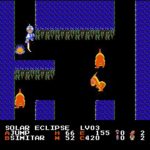
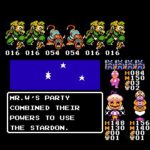
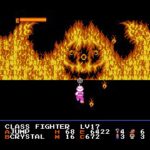
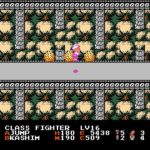
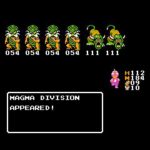
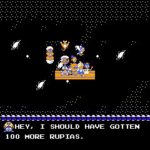
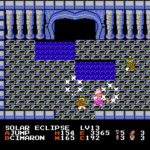
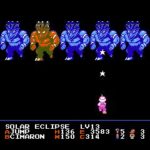

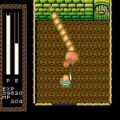
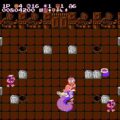
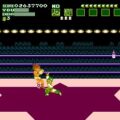
4 thoughts on “The Magic of Scheherazade”